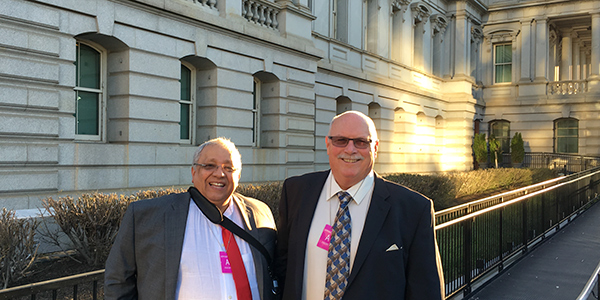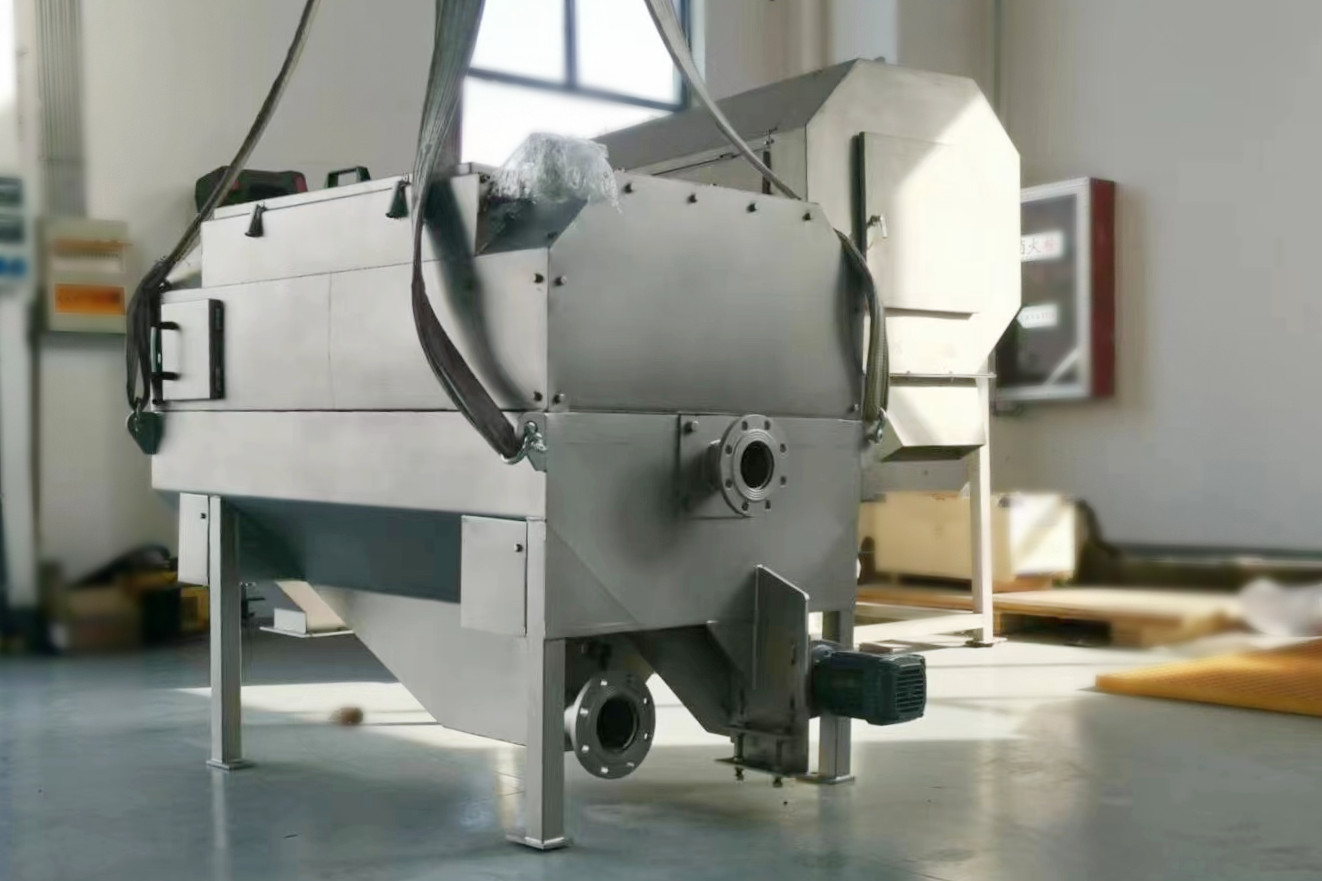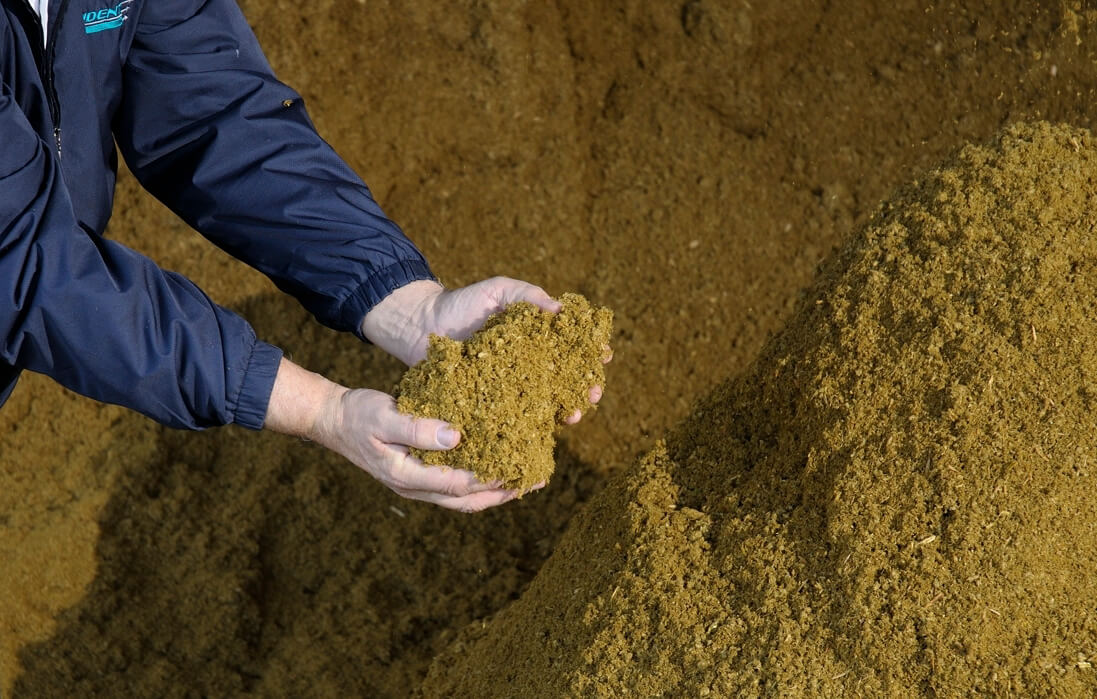When the rotary drum screen was introduced for use in agriculture to help dairy farms…
Trident Nutrient Recovery goes to the White House
Abbotsford, BC – April 21, 2016 – Trident Processes and its’ partners were invited to the White House on March 30, 2016 to present their commercial Nutrient Recycling technologies, as well as the future developments they are working on that will significantly advance their nutrient recovery systems worldwide.
The White House visit was a followup to Trident’s top-10 award for a solution they submitted to the US Environmental Protection Agency’s Nutrient Recycling Challenge issued last November. To launch its’ challenge, an international competition to develop affordable technologies that recycle nutrients from livestock waste, the EPA partnered with the U.S. Department of Agriculture, pork and dairy producers, and environmental and scientific experts.
Nutrient Recycling is the process of recovering and recycling specific components of manure before they are released into the environment. Technologies that can solve the manure problem have risen high on each of the partners’ list of priorities. Studies into the agricultural causes of GHG emissions and pollution of watersheds and water tables has highlighted the significant role intensive livestock operations play. Trident has been developing solutions for these nutrient problems for over 10 years.
“We already had commercial nutrient recycling systems on dairy farms in the USA, Canada and China,” explained Kerry Doyle, President of Trident Processes. “We decided to present concepts for some of the advanced nutrient recovery solutions we and our partners are working on. Those take the benefits of nutrient recovery and recycling well beyond anything we have commercialized now.”

Dr. Aicardo Roa-Espinosa (l.) and Kerry Doyle (r.) at the White House complex in Washington DC
Trident’s processing technologies, a combination of specialized chemistry, physics, equipment and automation have been in development for a number of years. Early on, Mr. Doyle established strong relationships with two partners who were important to the development of the technology, Leap Tech Inc. and Soilnet LLC both from Wisconsin, the heart of the nation’s dairy industry.
Leap Tech, Inc, founded by Richard “RC” Ludke, develops the sophisticated sensor systems and controls that optimize and automate the entire nutrient and bedding recovery systems. “We have automation of the systems pretty well defined,” explains Mr. Ludke, “Although, it can still be a challenge for material coming from Anaerobic Digesters that use mixed-waste feedstocks because what’s coming from the digester is constantly changing.” “It’s those types of situations that Leap Tech’s expertise with materials handling and automation is invaluable,” adds Doyle.
Soilnet LLC., a state-of-the-art laboratory, founded by Dr. Aicardo Roa-Espinosa, an adjunct Professor with the University of Wisconsin – Madison, developed the original polymers and processes used by the Trident System to separate the nutrients from the manure. Those processes, part of Trident’s current commercial nutrient recycling systems, are able to recover most of the fiber. The fiber is then recycled back to the barn for bedding. Then, about 80% of the Phosphorus, 50% of the nitrogen and 25% of the Potassium nutrients that remain in the water are recovered.
Dr. Roa’s newest R&D is developing techniques that are advancing what’s recovered into by-products that will have not just cost saving value for farmers, but real intrinsic value, including new revenue streams from the manure itself.
The first advance is a carbon based feedstock ideal for the production of ethanol. This could be sold to Ethanol producers that will provide an enormous revenue premium compared to bedding cost recovery. The second major development is an organic, lignin-based polymer that would allow the nutrients being recovered to be organically certified, which when dried and granulized (a process also being developed) would provide a second significant value increase compared to the current nutrient cake being produced. “We’ve accomplished these in the lab,” says Dr. Roa. “Our current step is to authenticate that work with in-field pilot projects.” A world-class pilot project is now under development on a commercial nutrient recovery farm site in Indiana.
“The new recovery processes currently under development show promise to increase nutrient recovery rates to 90% Phosphorus, 85% Nitrogen and 50% Potassium,” says Doyle. “We are also developing contractual arrangements with manufacturers of granulizing equipment that will see the costs for turning the recovered nutrient material into commercially salable, dried certified-organic fertilizer into a fraction of current production costs.” Trident’s goal is to provide farmers a nutrient recovery solution that goes from raw dairy manure to granulized, certified organic, slow-release fertilizer bagged and ready to retail.
It seems this isn’t pie-in-the-sky thinking either. Trident’s nutrient recycling system is already proving itself to reduce costs for some significant dairy operations. Prairie’s Edge Farms (formerly, Fair Oaks Farms), at Fair Oaks Indiana is one of America’s most influential dairy operations. They are also one of Trident’s early adopters of Nutrient Recovery Systems. Dr. Mike McCloskey, CEO of Prairie’s Edge, is pleased with the nutrient recovery initiative suggesting efficiencies the Trident system is providing could reduce the farm’s overall costs associated manure operation as much as 33 percent. “Manure has been taking an oversized slice of our operational budget for years,” says McCloskey. “Based on our experience so far, the Trident system could bring our overall manure operations costs for manure back into balance. Being able to do that would be healthy for the entire industry.”
Understanding that, if the new advancements as presented in Washington DC have the potential to improve the technology even more, nutrient recovery is looking pretty positive for the dairy industry. There’s little doubt these developments are why Trident was one of the technologies invited to Washington, and highlighted as a serious solution to the future challenge manure presents.
Both Doyle and Roa have an interesting perspective on the future of manure. “We know the day will come,” envisions Dr. Roa, “when the by-products from dairy manure will create revenue streams that equal or exceed the value from the milk itself.”
That sounds a little ambitious. But if a visit to the White House in the presence of some of the most influential organizations in the world is an indication of what the future holds, it is not that far-fetched.
News Releases


